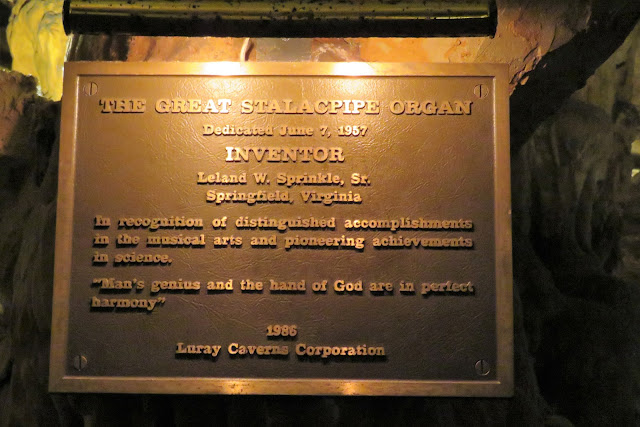One of the highlights
of our visit to Luray was touring the Luray Caverns. The cave was discovered in
1878 by five local men and has been open to the public since 1922. The cavern
system is the largest in the Eastern United States and is adorned with looming colorful columns, petrified mud flows, stalactites, stalagmites, and mirrored pools.
There is a spring of
water called Dream Lake that has an almost mirror-like appearance, where
stalactites reflected in the water appear to be stalagmites. This illusion is
often so convincing that people are unable to see the actual bottom, even
though the deepest point in the water is only around 20 inches deep. The lake
is connected to a spring that continues deeper into the caverns.
The Wishing Well is a
green pond with coins three feet deep at the bottom, and like Dream Lake, the
well also gives an illusion, but in reverse. The pond looks three or four feet
deep, but is actually six to seven feet deep.
Located deep in the
caverns is the Great Stalacpipe Organ, an electrically actuated lithophone made
from solenoid fired strikers that tap stalactites of various sizes to produce
tones similar to those of xylophones, tuning forks, or bells. This one-of-a-kind
instrument was invented and built in 1954 by Leland W. Sprinkle, a mathematician
and electronic scientist at the Pentagon. He began his monumental project by searching
the vast chambers of the caverns and selecting stalactites to precisely match a
musical scale. It took him over three years to complete it.
There isn’t much more I
can say about these caverns that couldn’t be better experienced by being there,
or at least looking at just a few of the dozens of pictures we took while we
were there.




































No comments:
Post a Comment